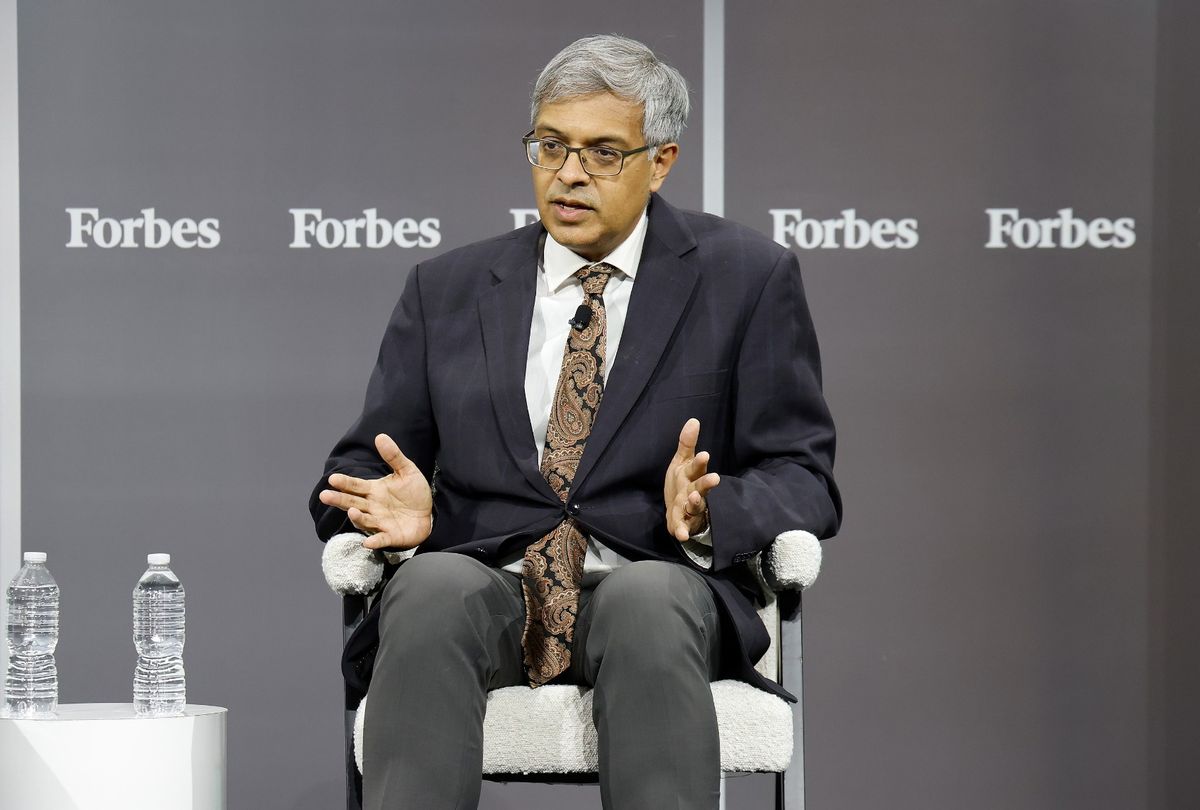By most accounts, President-elect Donald Trump bungled the federal response to COVID-19, publicly downplaying concern about a virus that he privately admitted was “deadly stuff.”
“It’s going to disappear. One day — it’s like a miracle — it will disappear,” Trump said in Feb. 2020, at the same time he was admitting to journalist Bob Woodward that the virus was spreading fast and was more lethal than “even your strenuous flus.”
Dr. Jay Bhattacharaya, Trump’s pick to lead the National Institutes of Health and oversee some $47 billion in research funding, agreed with Trump at the time; the public version, at least.
In a March 2020 essay he co-authored with a fellow Stanford University scientist, Bhattacharaya, an epidemiologist at Stanford University, argued that COVID-19 was far less deadly than people feared. Although today The New York Times describes him as a doctor who “opposed lockdowns,” he inadvertently made the case for them in The Wall Street Journal — only to then try and knock that case down.
“If it’s true that the novel coronavirus would kill millions without shelter-in-place orders and quarantines, then the extraordinary measures being carried out in cities and states around the country are surely justified,” Bhattacharaya wrote. “But there’s little evidence to confirm that premise — and projections of the death toll could plausibly be orders of magnitude too high.”
Bhattacharaya argued that public health experts were almost certainly overstating the danger of the novel coronavirus, suggesting the fatality rate was far below what we were being told.
“If the number of actual infections is much larger than the number of cases — orders of magnitude larger — then the true fatality rate is much lower as well,” he wrote (“it could make the difference between an epidemic that kills 20,000 and one that kills two million,” he explained). “That’s not only plausible but likely based on what we know so far.”
Indeed, the actual mortality rate, he argued, is likely “one-tenth of the flu mortality rate of 0.1%.”
COVID-19 would go on to kill more than 1.2 million Americans, according to the CDC, and the mortality rate, even after vaccines and repeat infections, is still worse than the flu. While Bhattacharaya was right that “a 20,000- or 40,000-death epidemic is far less severe a problem than one that kills two million,” he was wrong that this would be that sort of outbreak. And critics argue his solution, premised on the virus being far less deadly than it proved to be, would have killed many more by letting COVID-19 rip through the country as all but the elderly and immunocompromised went about their regular business.
We need your help to stay independent
Critics of early 2020 lockdowns, like Bhattacharaya, point to similar mortality rates in states with leaders who adopted different approaches. Early on, for example, New York and California were worse off than Florida in terms of COVID-19 deaths — evidence, to some, that there was no downside to letting everyone enjoy a pre-vaccine happy hour at Applebee’s.
But a 2023 study published by The Lancet found that state governments’ “uses of protective mandates were associated with lower infection rates, as were mask use, lower mobility, and higher vaccination rate, while vaccination rates were associated with lower death rates.” And while Florida had a lower death rate than some blue states, a lead author of the study noted that was because Floridians continued to follow best practices — wearing masks, avoiding public gatherings — even after their political leaders began telling them not to. (Post-vaccine, Floridians, vaccinated at lower rates, are dying more often.)
In other words, Bhattacharaya’s claim to fame in conservative circles ― that he was an early, prescient critic of draconian lockdowns — requires ignoring that he grossly underestimated the danger of COVID-19 and that his advice, if followed, would have resulted in millions more pre-vaccine infections and ensuing deaths.
Now, though, Bhattacharaya is set to be a key player in shaping any future response to a viral outbreak, winning the race to lead NIH after earning the support of Peter Thiel, a far-right billionaire who previously sponsored Vice President-elect JD Vance, and Robert F Kennedy Jr., the anti-vaccine activist who Trump picked to lead the Department of Health (Bhattacharaya has not expressed flat opposition to vaccines but has instead cherry-picked studies to suggest their benefits are in doubt, while ignoring those that affirm they save lives). If confirmed, he will be well positioned to steer billions of dollars in funding toward researchers who share his biases and away from those pursuing the sort of science no longer favored in Washington.
Want a daily wrap-up of all the news and commentary Salon has to offer? Subscribe to our morning newsletter, Crash Course.
Speaking to The Washington Post earlier this year, Bhattacharaya framed his agenda in populist terms, claiming he would change how scientific research is funded to reduce the power of officials like the now-retired Anthony Fauci.
“I would restructure the NIH to allow there to be many more centers of power, so that you couldn’t have a small number of scientific bureaucrats dominating a field for a very long time,” he said. Whether the new bureaucrats will be interested in ceding their power, or amassing it for themselves remains to be seen.
Elizabeth Jacobs, a cancer and nutritional epidemiologist at the University of Arizona, summed up much of the scientific community’s feelings about a self-styled renegade leading NIH.
“This is bad news for public health,” she commented. “Every step Trump takes in his nominations,” she added, “is to dismantle community institutions.”
Read more
about Trump's Cabinet



Shares